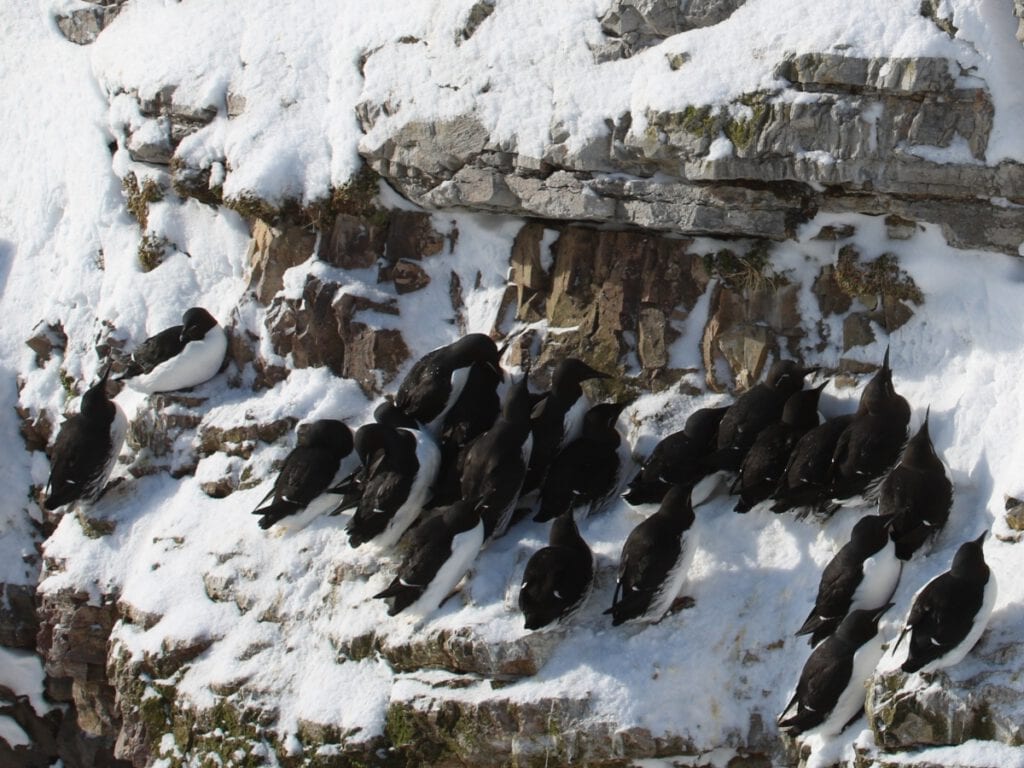Arrival at breeding sites is advancing among common and Brünnich’s guillemots
The time spent between arriving at the colony and egg-laying is an important component that affects seabird breeding success. Using light-level geolocators, scientists have examined whether common and Brünnich’s guillemots are advancing their colony arrival in spring.
The pre-laying period is important
Reproduction in birds is predicted to be timed to optimally exploit temporally favourable conditions, such as high availability of prey. Rapid climate change has led to an advance in the annual cycle in many organisms, but for seabirds, the timing of egg-laying has been shown to be insensitive to changing climate conditions. This may result in a mismatch with resources at lower trophic levels, which could result in a lower breeding success. Few studies have, however, included the pre-laying period, the time between the arrival at the colony in spring and egg-laying, as an important component affecting breeding success. During this period, the birds establish and defend nest sites, build up body condition and mate. This was the basis for a new study conducted using tracking data from light-level geolocators on common and Brünnich’s guillemots in 14 colonies across a large latitudinal gradient (62°N-79°N) in 2009-2018. The researchers wanted to see if trends in arrival date were absent, as found in egg-laying. As egg-laying is earlier in southern colonies, they also tested if arrival date was delayed with latitude.
Earlier arrival
The study showed that arrival date at the colony was highly variable between colonies and species (range 80 d), and much of this variation could be explained by colony size. However, for all colonies and both species the analyses showed that the guillemots on average advanced their arrival by 1.4 days/year, resulting in a generally longer pre-laying period over the years from 2009 to 2018. The timing of egg-laying and reproductive success remained unchanged during this period. Thus, it is demonstrated that potentially not all components of seabird breeding phenology are insensitive to changing environmental conditions.
Read the article:
Contact person: Hallvard Strøm, Norsk Polarinstitutt

Photo: SEAPOP
